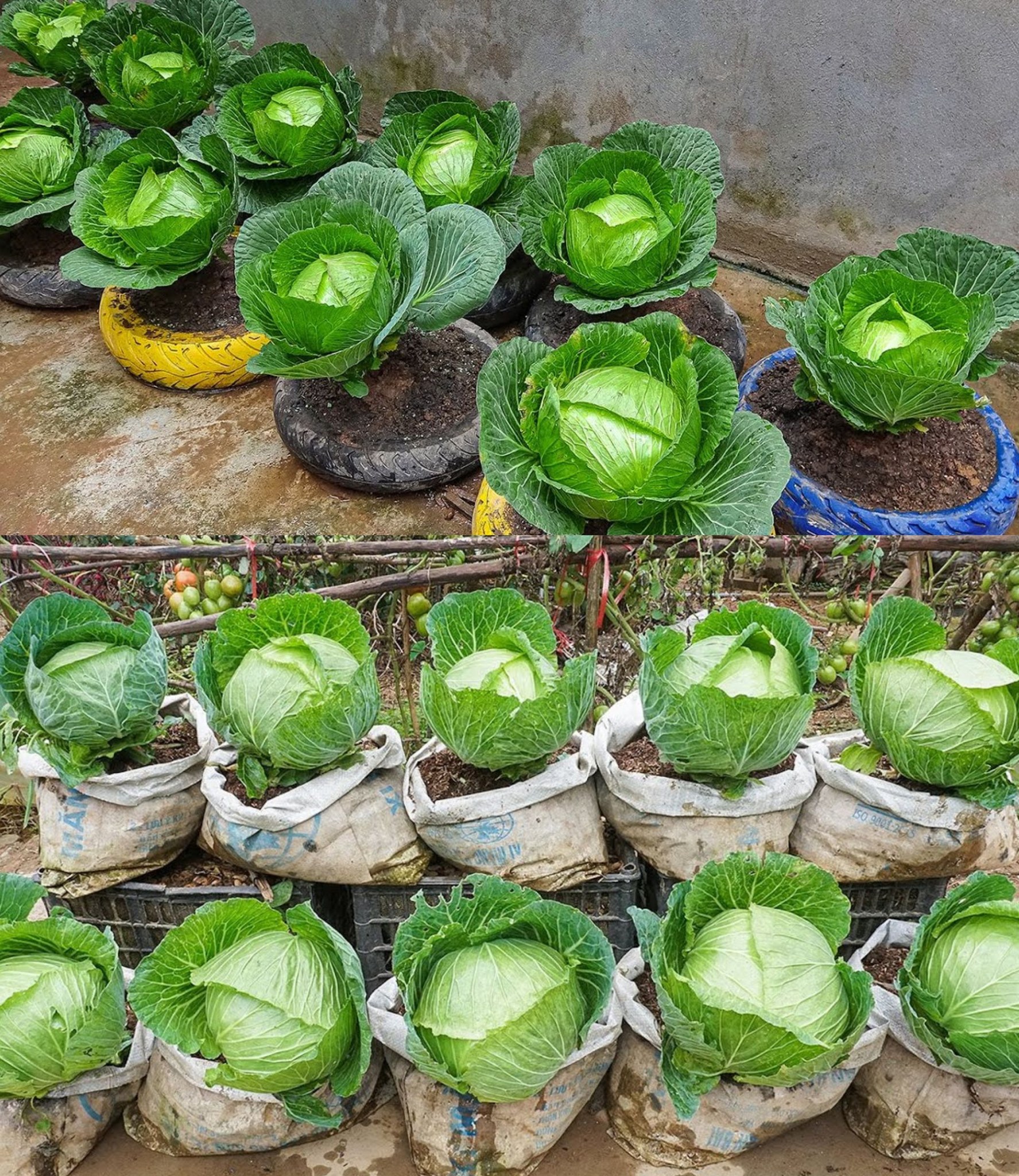
Super Simple Summer Cabbage Growing Tips, Always Have Clean Cabbage To Eat🌱
Growing cabbage in the summer can be a rewarding experience, and with the right tips, you can enjoy a steady supply of fresh and clean cabbage for your meals. Here are some super simple summer cabbage growing tips:
- Choose the Right Varieties:
- Opt for cabbage varieties that are well-suited for summer growth. Varieties that are more heat-tolerant and have shorter maturation times are ideal for summer planting.
- Start with Quality Seedlings:
- Begin with healthy seedlings from a reputable nursery or start your own indoors. Make sure the seedlings are strong and disease-free.
- Planting Time:
- Plant cabbage in early to mid-summer, giving it enough time to mature before the heat becomes too intense. Check the recommended planting dates for your specific location.
- Sunlight Requirements:
- Cabbage thrives in full sun, but in hot summer climates, some afternoon shade can be beneficial. Ensure your cabbage plants receive at least 6 hours of direct sunlight each day.
- Well-Drained Soil:
- Cabbage prefers well-draining soil with a pH between 6.0 and 7.5. Amend the soil with organic matter, such as compost, to improve fertility and water retention.
- Watering:
- Keep the soil consistently moist. Cabbage needs regular watering, especially during hot weather. Water at the base of the plant to keep the leaves dry and reduce the risk of diseases.
- Mulching:
- Apply a layer of mulch around the base of the cabbage plants to retain moisture, suppress weeds, and regulate soil temperature. Mulching also helps keep the cabbage heads clean.
- Fertilization:
- Fertilize the cabbage plants with a balanced, all-purpose fertilizer. Follow the recommended application rates on the fertilizer packaging. Side-dress with additional fertilizer during the growing season if needed.
- Spacing:
- Plant cabbage seedlings at the recommended spacing to allow for proper air circulation. Adequate spacing helps prevent diseases and ensures the cabbage heads develop properly.
- Pest Management:
- Keep an eye out for common cabbage pests, such as cabbage worms and aphids. Use organic pest control methods, like neem oil or insecticidal soap, to manage pest issues.
- Harvesting:
- Harvest cabbage heads when they reach the desired size and are firm to the touch. Use a sharp knife to cut the cabbage heads at the base. Harvesting regularly encourages new growth and prolongs the harvest period.
- Successive Planting:
- Consider planting cabbage in successive batches every few weeks to ensure a continuous harvest throughout the summer.
- Check for Diseases:
- Regularly inspect your cabbage plants for signs of diseases, such as black rot or clubroot. Early detection allows for prompt treatment.
- Store Properly:
- After harvesting, store cabbage heads in the refrigerator. Keep them in a perforated plastic bag to maintain freshness.
By following these super simple tips, you can grow clean and fresh cabbage throughout the summer, providing a nutritious addition to your meals. Experiment with different cabbage recipes to enjoy the full flavor and versatility of this vegetable.
